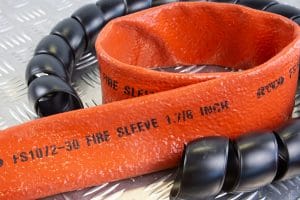It’s never a good idea to wait for something to fail before worrying about maintenance – and with hydraulic hoses – the financial, environmental and safety stakes are so high that neglecting maintenance is extremely irresponsible.
Dangers of Hydraulic Hose Failure
Health and Safety
The primary concern of any workplace should be the safety of its workers. If you don’t take adequate care of your project’s hydraulic hoses and fittings, you are putting them at grave risk.
Environmental
Whether through sudden catastrophic failures or incremental leakage over time, hydraulic systems have the potential to cause great environmental damage. Hydraulic equipment leakage in the mining industry alone sees 370 million litres of hydraulic fluid deposited into topsoil, rivers, and forests annually.
Financial Loss
If a hose in your operation explodes or becomes uncoupled, you will also be facing huge financial loss as well as safety and environmental risks. Incremental fluid leakage is also a huge cost – the 370 million litres mentioned above represents an annual loss of around $1 billion worth of hydraulic oil!
Prevention Is Better Than Cure
Of course, even with the best maintenance in the world, leaks and failures will still sometimes occur in your industrial hoses and fittings. However, according to a 2015 study by the Australasian Mine Safety Journal (AMSJ), the majority of problems can be mitigated by regular, targeted maintenance and improved work protocols.
Scheduled Maintenance
The single most important factor is carrying out a regular, scheduled check and maintenance on all hydraulic equipment. The appropriate schedule for maintaining your equipment will be found in your user manual. Up to 50% of equipment failures in the AMSJ study were caused by hose or fitting failures that could be avoided through proper maintenance and inspection.
Maintenance Checklist
Exact maintenance procedures will vary slightly for specific hydraulic products; but as a general rule, the following checklist should be followed and safety guidelines must be rigorously adhered to:
1.Always turn off the equipment’s power and release pressure in hoses before carrying out any maintenance on hydraulic systems.
2.Place equipment and components in a safe or neutral position using a lock and tag procedure to ensure safety for the duration of the inspection.
3.Remove access panels and inspect hoses and fittings for the following signs of damage or leaks:
- Abrasion, nicks, cuts, cracks, hardness, or colour changes in the hose cover.
- Signs of leakage, such as puddles of fluid, low fluid levels in reservoir, leakage around the hydraulic fittings, or a greasy or dirty hose.
- If you suspect pressurised leaks, check for them using a piece of cardboard or plexiglass, never your hand!
4. Repair or replace damaged hoses and other components as necessary.
5. Safely inspect other hydraulic components like valves, pumps, and cylinders for leaks and damage.
6.Once your maintenance check is complete and all faulty parts are repaired or replaced, reinstall the system’s access panels.
7. Now you can safely turn the power back on.
8. Don’t become complacent, pay attention to your hydraulics system in between scheduled checks. Look and listen for anything unusual, and familiarise yourself with the common signs of compromised industrial hoses and fittings.
Hose Replacements and 24/7 Service
If you need a hose replaced and lack the personnel for the job, get in touch with the experts at Hoseright about our replacement and repair services. We offer 24/7 mobile service in Perth and the surrounding areas.












